SeaFox: Little Killer Sea Fox
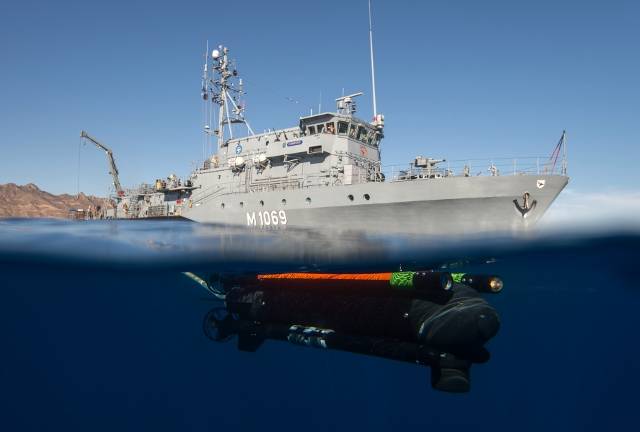
Appearance in the late 80s - early 90s. Small-sized economical digital signal analyzers made it possible to introduce into the non-contact equipment of modern mines (primarily bottom mines) channels of "fine analysis" of the physical fields of targets, ensuring their classification and destruction of specifically designated types of targets. At the same time, an increase in the sensitivity of proximity fuses led to the possibility of detecting and destroying specialized heavy anti-mine underwater vehicles (NPA), which became in the 80s. the main armament of western anti-mine ships (minesweepers-seekers, TSCHIM).
Taking into account the fact that 2-3 such TNLA were usually placed on TSCHIM, the use of "defenders mines" (with a trigger channel on the TNLA) could lead to "disarming" of TSCHIM at the very beginning of the mine action.
In addition, the cost of "classic" heavy anti-mine ULA turned out to be an order of magnitude (or more) more than the cost of a mine, and the "exchange of a TNLA for a mine" became terribly unprofitable in economic terms.
At the first stage, this led to the emergence of a number of small-size ROVs-mine destroyers, one of the most successful of which was the small ROV SeaFox from Atlas Elektronik (in serial production since 1998)
With a total mass of 43 kg (more than an order of magnitude less than the mass of classic heavy anti-mine UFOs), the SeaFox had a small-sized cumulative warhead weighing 1,4 kg (a conventional NATO anti-mine explosive charge had a mass of 140 kg).
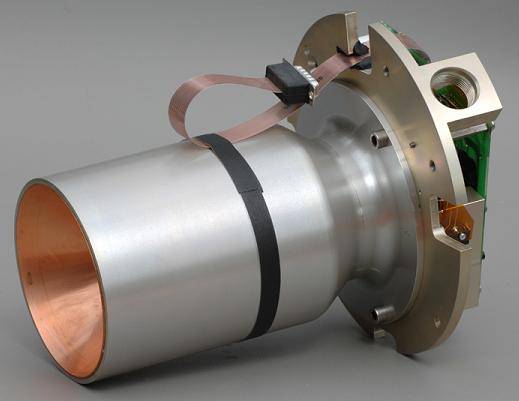
To destroy a mine with such a small shaped charge, high maneuverability of the TNPA and its close approach to the mine were required. At the same time, the developers approached the issue of physical fields of TNLA simply and rationally. From the ROV SeaFox documentation:
That is, the requirements for an extremely low level of physical fields of such a TNLA were not imposed on the developers (and this is a very important lesson for our Navy, where they love to impose extremely unrealistically overestimated requirements in new models of military equipment).
At the same time, the cost of the combat modification of the TNLA turned out to be quite moderate: about 10 thousand dollars (at prices of the late 2000s), while the cost of a modern western bottom mine was about 20 thousand dollars.
The ROV had two main modifications: a combat (with a warhead) SeaFox C and a reusable training and survey version of Seafox I with an additional set of search equipment.
Typical range of application: 500 or 1000 m, while for its provision on a large current, a cassette with a fiber-optic communication cable up to 4 km long was installed on the ROV itself.
The standard ammunition on the ships of the Swedish Navy was, for example, 10 "survey" Seafox I and 25 "combat" SeaFox C.
At the same time, small anti-mine TNLA in no way replaced heavy TNLA. Given the complexity of mine action, they effectively complemented each other.
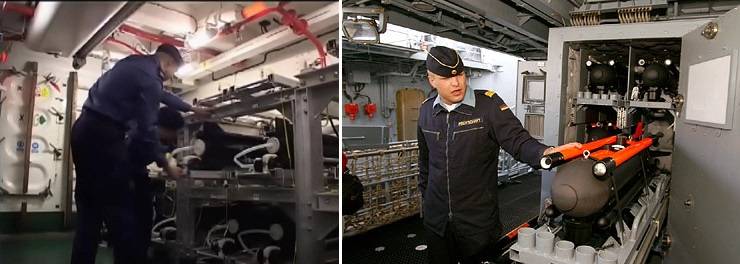
Small weight, dimensions, simple means of ensuring the use of ROVs allow SeaFox to be used from the smallest floating craft, incl. small boats-RIB.
Separately, it should be noted the extreme simplicity, even "primitiveness" of the SeaFox ship facilities. For example, the cable is wound on a simple manual “meat grinder” winch, and this solution is used even on large minesweepers (including the wealthy US Navy). Works? Works! Then why is it harder?
The author met photos from the NATO exercises of the SeaFox themselves and their coils in an icy-snow-covered form, i.e. The TNLA is quite suitable for use in conditions of significant negative temperatures (which, for example, another small anti-mine TNLA - K-Ster of the ECA company is not capable of).
The combination of efficiency, simplicity and low cost of the TNLA has led to its wide distribution in the world on a variety of media.
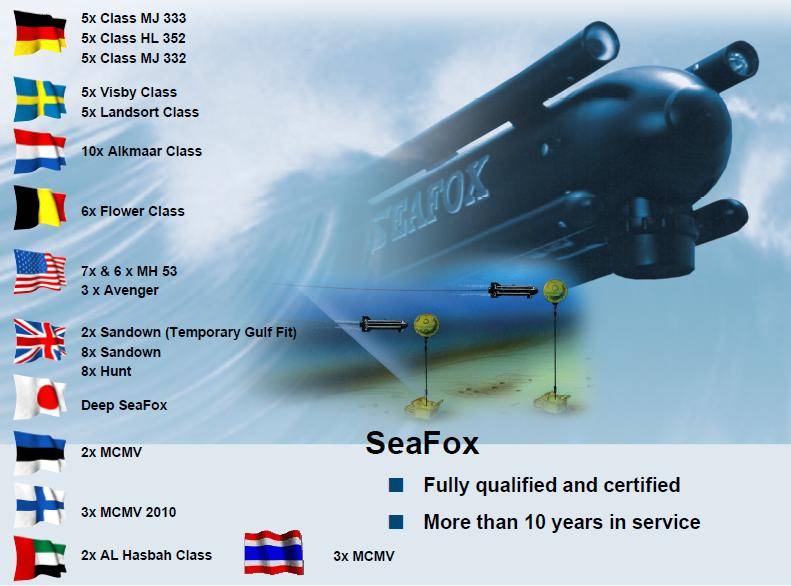
In the UK, a licensed release of SeaFox TNLA was established for its Navy (for other countries - supplies from Atlas Elektronik).
To equip unmanned mine action boats (BEC) ARCIMS (developed by Atlas Elektronik, adopted by the British Navy), a special launch container for TNLA was developed.
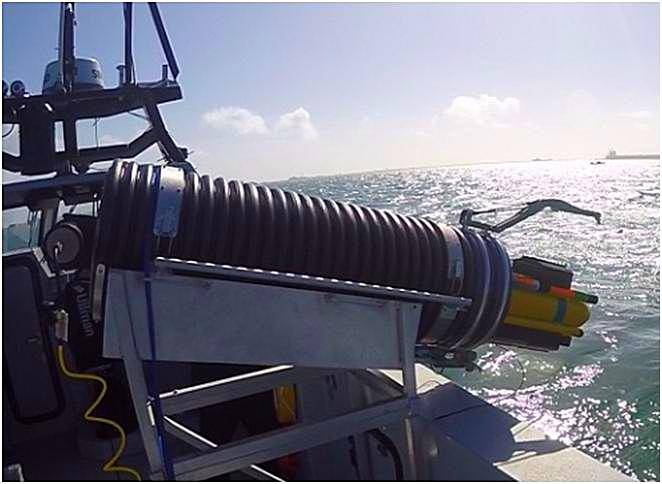
In 2002, successful tests were carried out on the use of SeaFox TNLA from the US Navy MH53 anti-mine helicopters, and now they are in service with the US Navy not only in the "ship" version (on the Avendger type), but also in the helicopter version (on the MH53 helicopters).
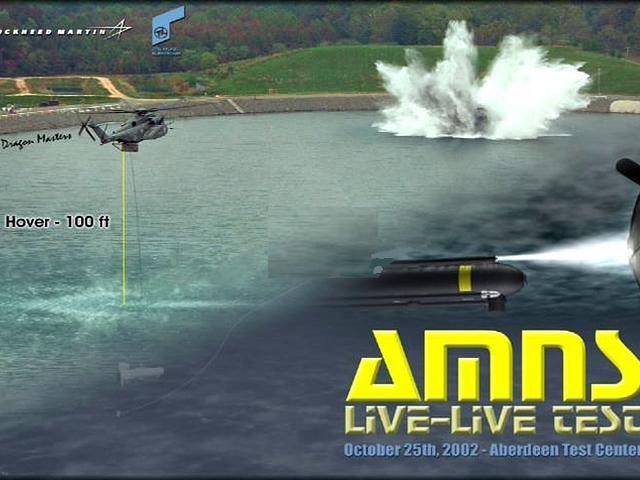
But story develops in a spiral. The operators and developers of SeaFox were faced with the question: why undermine the TNLA for 10 thousand dollars, if you can not do it? Perhaps this was only due to the detachable ultra-small warhead, which had to be attached to the mine hull with special punchers-perforators. This is how the COBRA detachable warhead appeared.
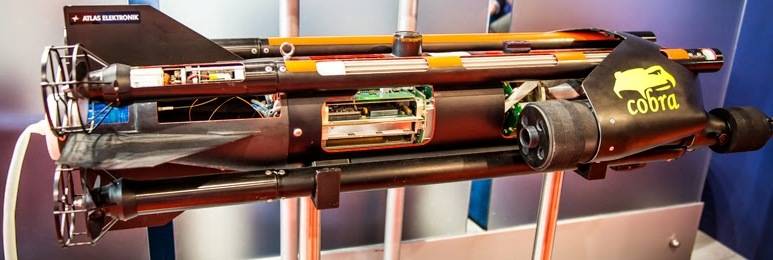
The engineering solution, like the entire SeaFox ROV, was simple and elegant. So is the application logic.
A smart mine? This means that it is quite advisable to undermine the TNLA on it (by itself, before its warhead is triggered), since it still completed its combat mission (and "smart processing" requires the corresponding cost of the mine), from the military-economic side it is still a win ( TNLA is cheaper than mines).
"Simple Mine"? Then SeaFox will come up and destroy it with a detachable COBRA warhead with perforators, and at a minimal cost (and the ROV itself will be saved for later use).
Conclusion
The lessons of the creation and use of the small ROV SeaFox are relevant for the Russian Navy precisely as an example of a simple but effective combat complex, to which unrealistic and overestimated requirements were not imposed (achievement of "ultimate characteristics"). SeaFox just does its job well, and for a very reasonable price.
Alas, it is usually quite different with us. A good example of this is the "sausage" of a small TNLA from the State Scientific and Production Enterprise "Region". See article "Ruby" toys... Its developers, having invented tasks for TNPA, seem to have only forgotten to send their apparatus into space, but they do not do well with the solution of the main (anti-mine) task.
Given the scale of the mine threat, the Russian Navy needs simple and effective mass analogues of SeaFox and COBRA, and not expensive and small-scale “sausages” of unknown purpose.
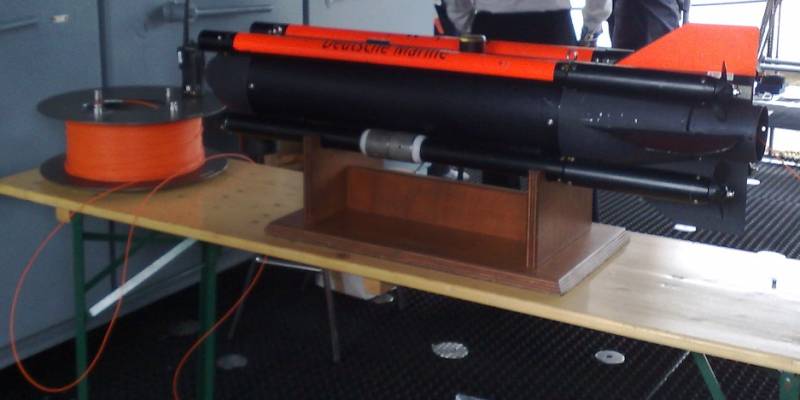
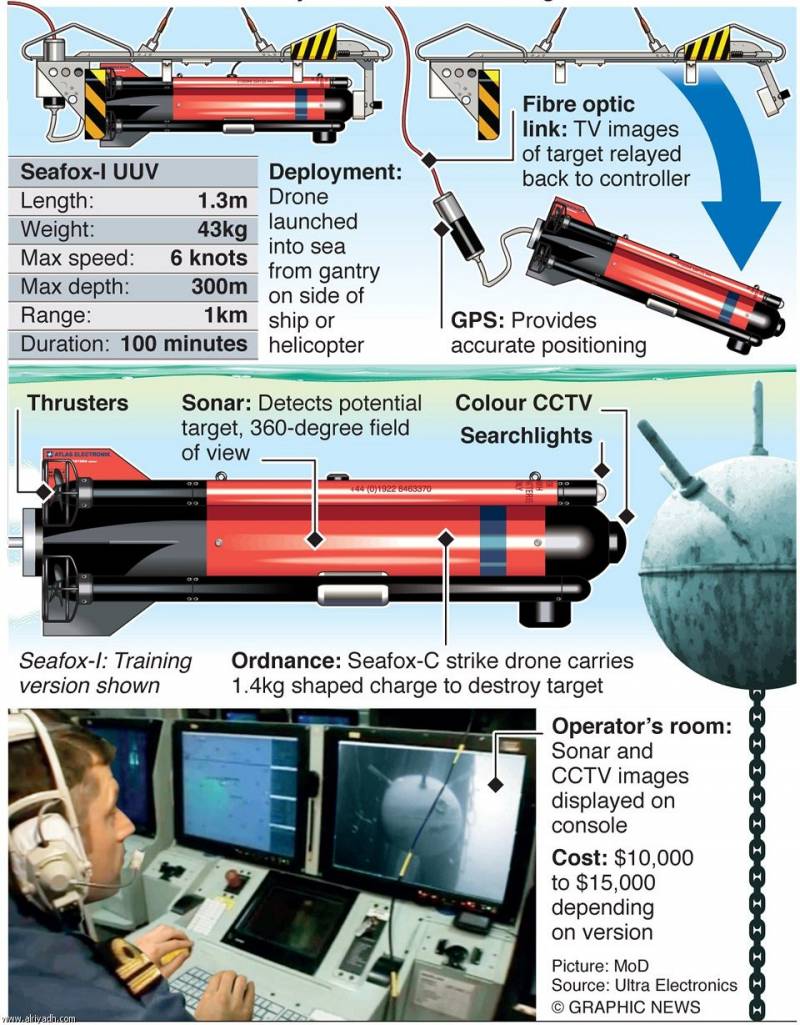
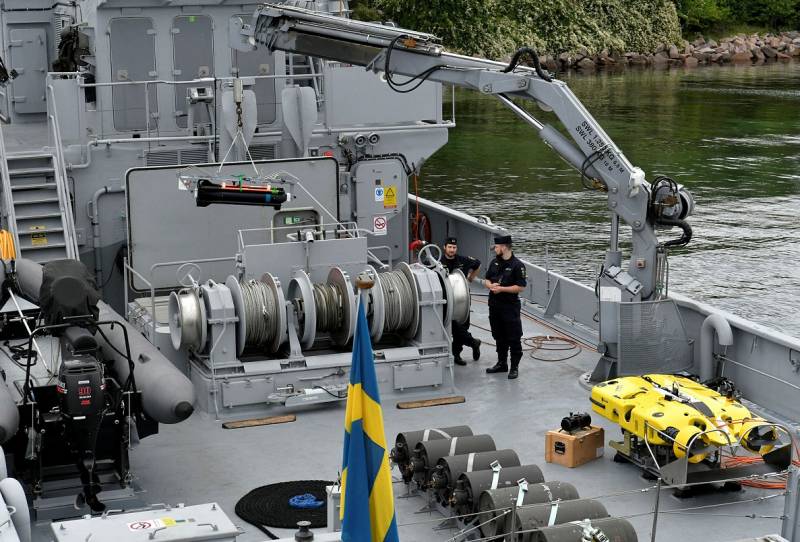
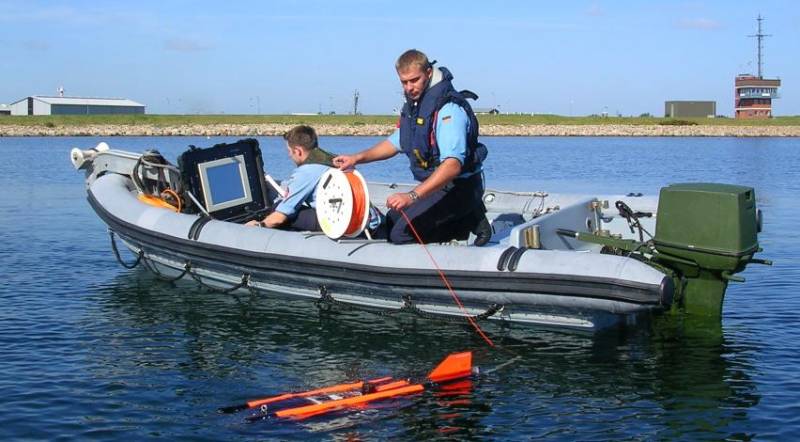
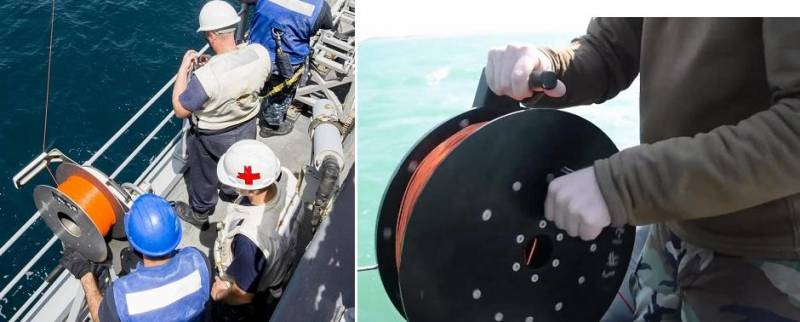
Information